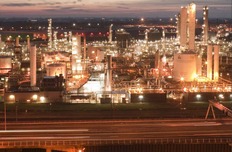- Maasvlakte 2 expanded the port's land by 20%.
- The Gate terminal for LNG import became operational in 2011.
- Wind energy capacity increased by 56 MW in the past five years.
- The port aims for 200 MW wind capacity by 2020.

Introduction
The Port of Rotterdam Authority presents the eighth edition of the Facts & Figures about the Rotterdam Energy Port and Petrochemical Cluster, offering insights into the port's production and terminal facilities.
Key Developments
Since the last edition in 2009, the port has undergone significant changes, including the opening of Maasvlakte 2, which expanded the port's land by 20%. This new land is designated for developments in the chemical, renewable, container, and distribution sectors.
Major Investments
In 2011, the Gate terminal for LNG import became operational at Maasvlakte, and it is expanding with a breakbulk terminal for liquid gas distribution. Additionally, two of the world's cleanest coal-fired power stations have started operations in Rotterdam. Many chemical companies and oil refineries have invested in expanding or optimizing their facilities, and there has been a notable increase in tank storage facilities. The port has also increased its wind energy capacity by 56 MW over the past five years, aiming for 200 MW by 2020.
Energy and Petrochemical Hub
Rotterdam's strategic location in Europe, excellent maritime access, economies of scale, and extensive service provider network make it a prime hub for the energy and petrochemical sectors. The port offers significant cluster advantages, including shared utilities and close proximity to industrial clients. Companies benefit from synergies where residual products from one serve as raw materials for another, creating an efficient and profitable business environment. The Port of Rotterdam Authority continues to enhance opportunities for existing and future process industries.

